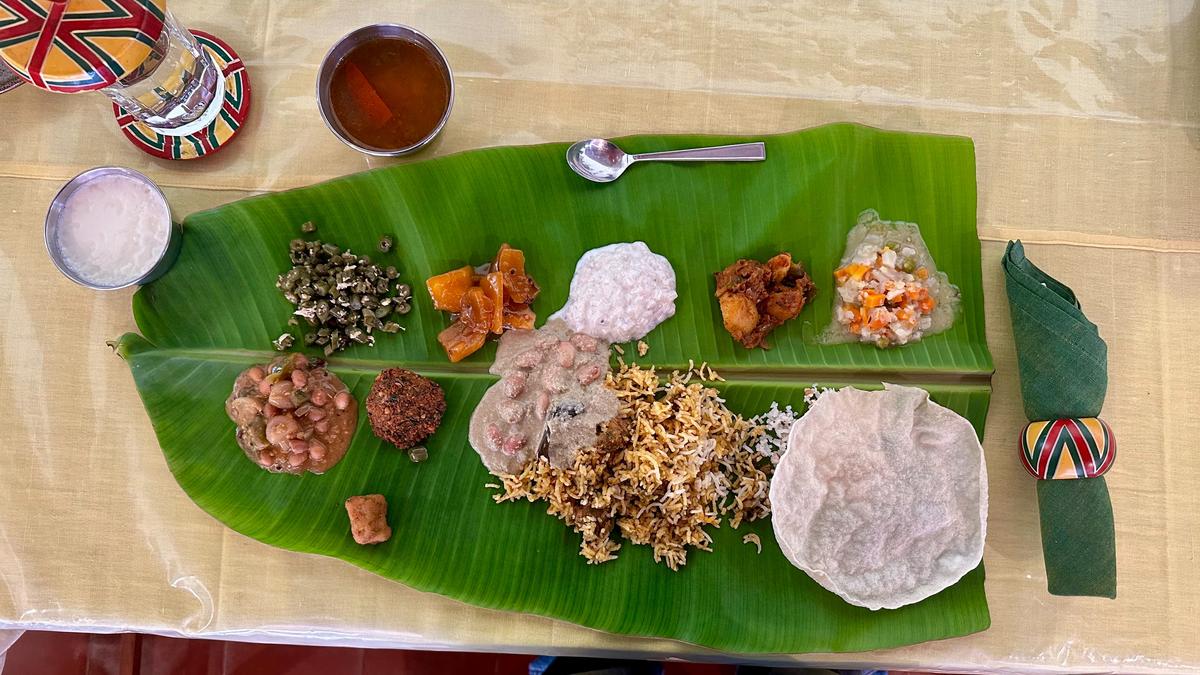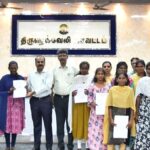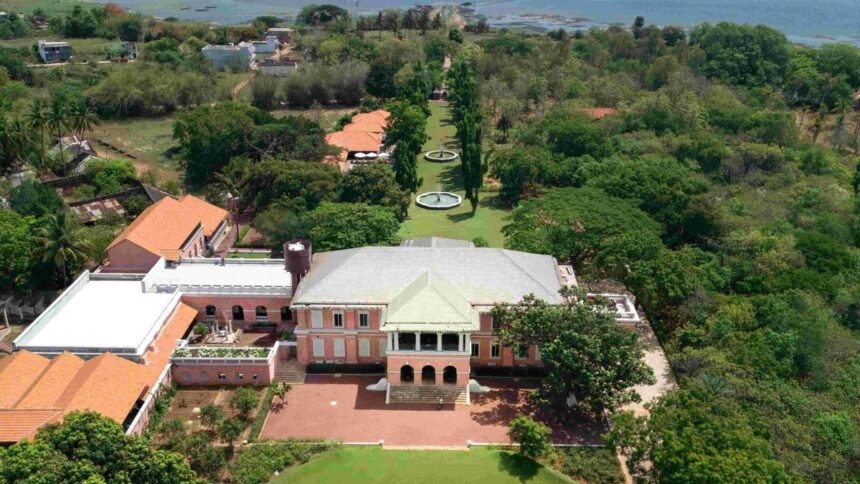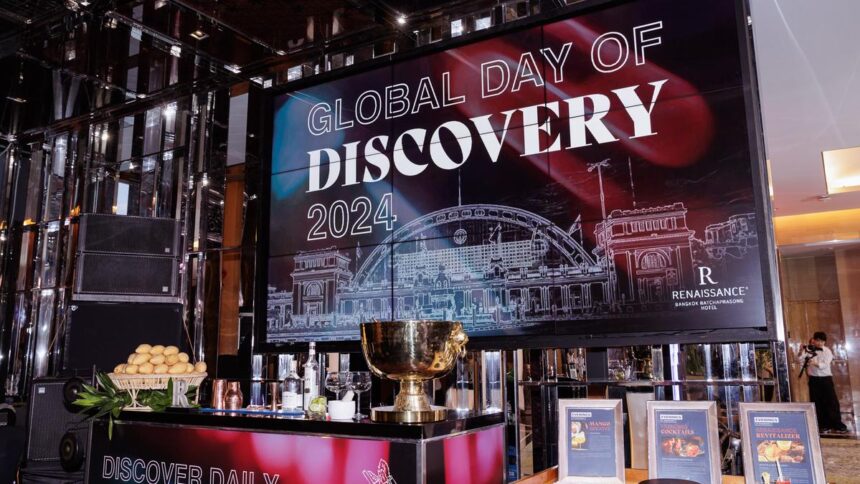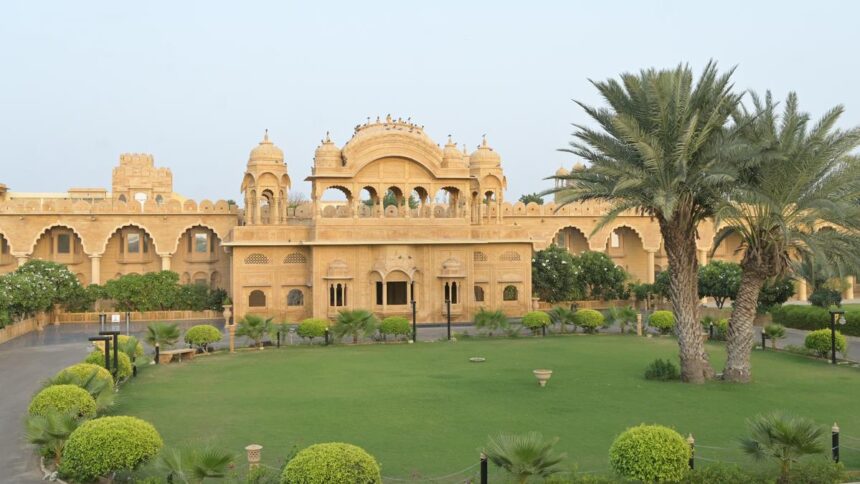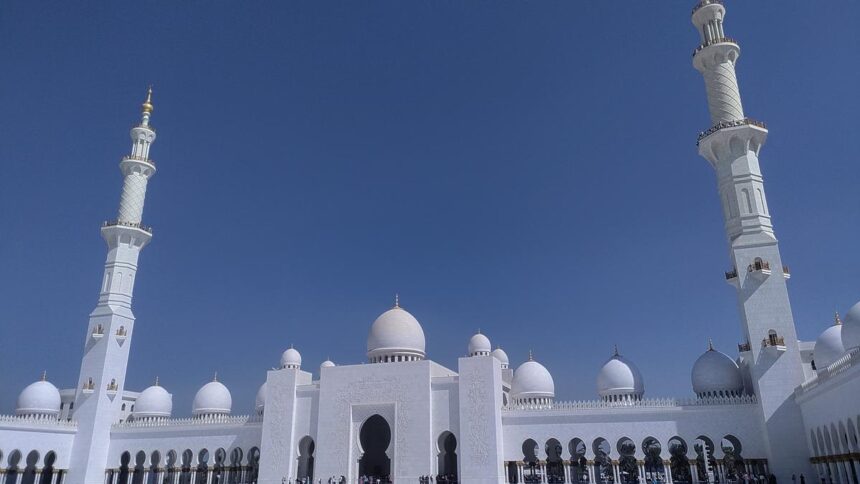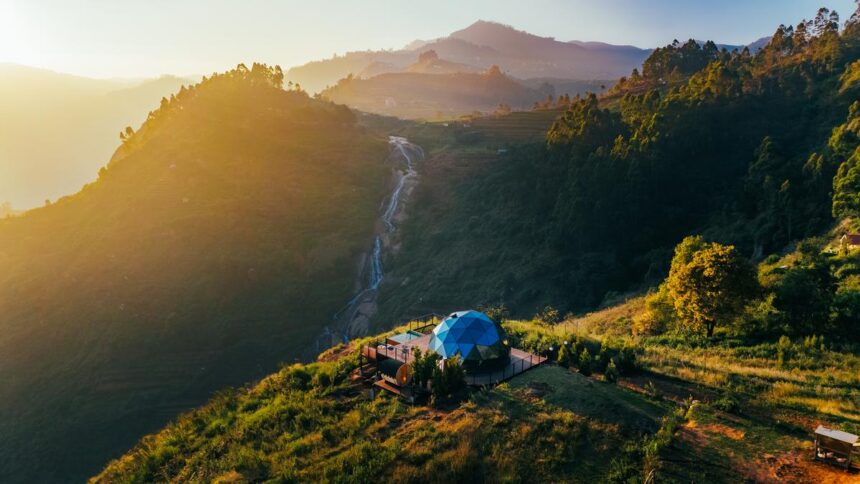The sweet smell of marigolds mixed with the still humidity of a Tamil Nadu afternoon linger in the air. We are in a palatial Chettinad mansion, one of many that we will visit in the coming few days. The tiles are a work of beauty, the Burmese teak pillars stand imposingly tall, and the aromas from the kitchen beckon. I am in the historic region of Chettinad on a food trail called Suvai, organised by The Lotus Palace Chettinad. Over this weekend, I try all the food that the region has to offer and learn more about the Chettiar community.
Last year, the Park hotels restored one of the oldest mansions in the region and launched the Lotus Palace Chettinad. Located near Karaikudi, the hotel joins hands with other properties in the area for Suvai, a three-day festival celebrating the cuisine of Chettinad. Iconic properties such as The Bangala, Visalam, Chidambara Vilas, and Chettinad Mansion, are also part of the festival. So, I pack my bags and catch a flight to Trichy, to immerse myself in the region’s rich history.
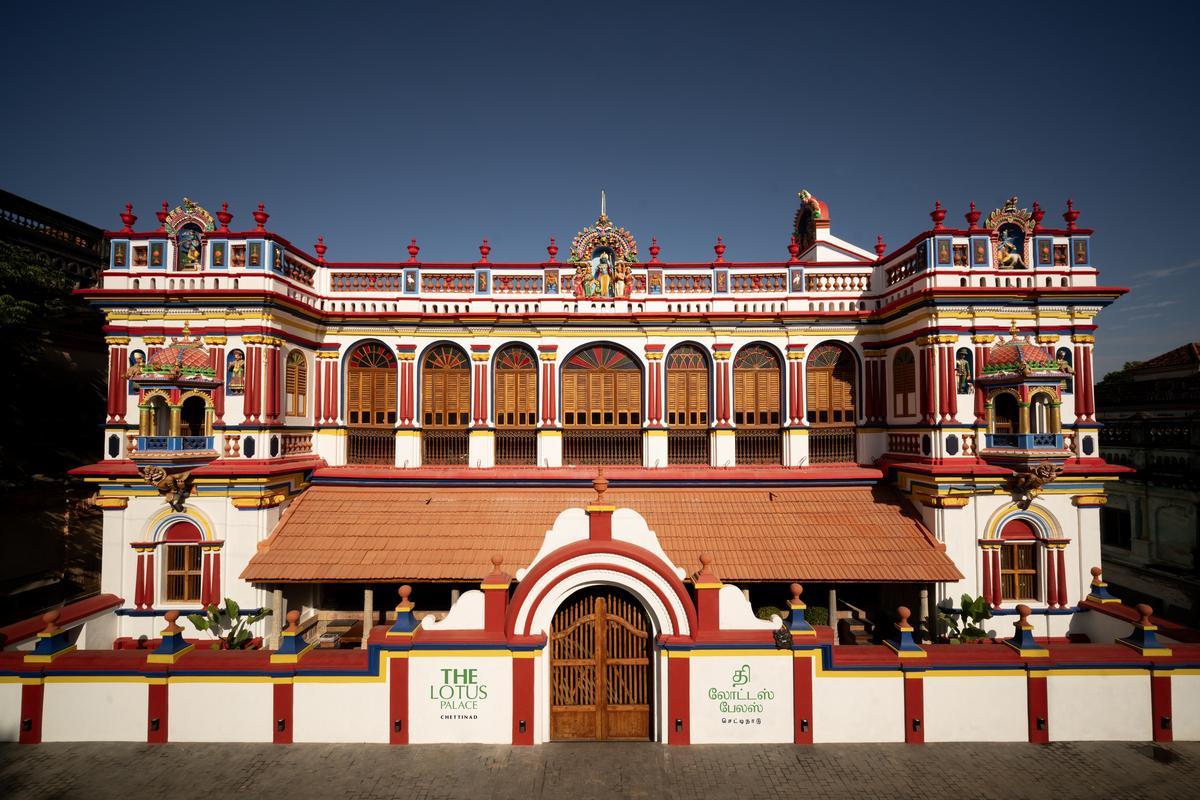
The Lotus Palace Chettinad
| Photo Credit:
Special arrangement
Who are the Chettiars?
Day one of the festival kicks off with a welcome dinner at The Lotus Palace by Priya Paul, the chairperson of Apeejay Surrendra Park Hotels Ltd. I am staying at Visalam, an art-Deco style CGH Earth hotel, a few minutes away. The dinner is curated by chefs Niyati Rao from Ekaa, Mumbai, and Ashutosh Nerlekar from The Park, Chennai, and is a mix of traditional and modern. Think almond soup with gundu milagai chillies, and lamb brain venpongal.
With my drink in my hand, I join Kathiravan Karunanithi, the hotel’s manager, on a tour of the property and a riveting history lesson. ‘Chetty’ is derived from the Sanskrit word sreshta, the same root for words like seth. They are a wealthy merchant class from Tamil Nadu. Legends say they originally lived near the coast in Kaveri Poompatinam and a tsunami drove them inland. They settled in villages in the Pudukottai district. Since they were maritime traders from the eighth century, they travelled far and wide. Their homes and kitchens bear testament to that; enamel and lacquer ware, antique wooden furniture, dry preserved foods like vatthals and dried meat, and of course, the spices. They even brought back the ‘forbidden’ black rice from East Asia and use it to make payasam.
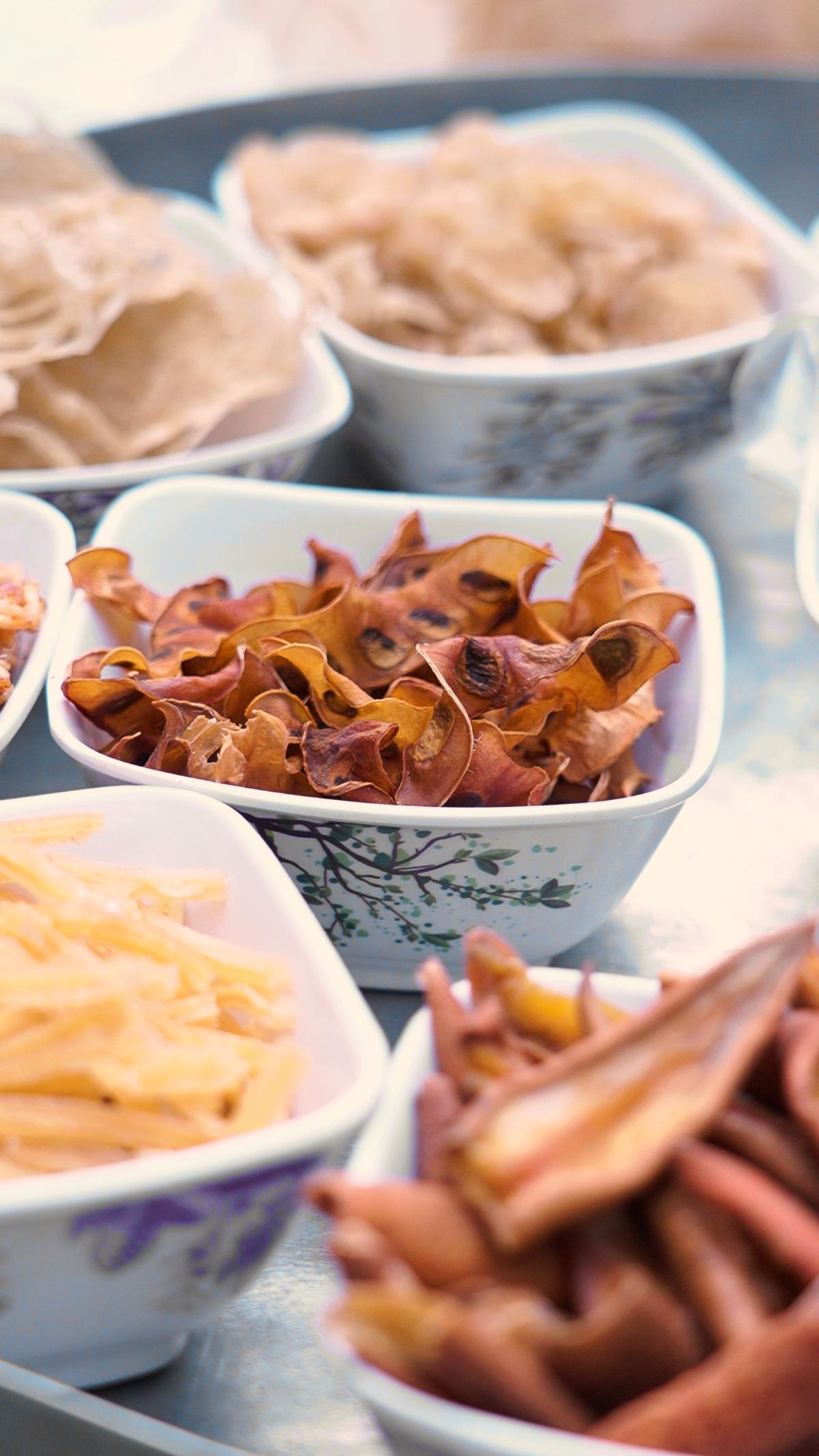
Dry and preserved vatthals from Chettinad, that are easy to carry while travelling internationally for trade
| Photo Credit:
Special arrangement
Between wedding feasts and street snacks
After a breakfast of steamed rice kozhukattai and dosa, we are off to explore the town. The first stop is Soundaram snacks. I feel like Charlie in the chocolate factory, except it is heaps of murukus instead of trees of candy. A family-run and women-led business, Soundaram makes authentic coconut oil and rice flour snacks. After the tour and watching the women hand-make the murukus and seedais, I buy a bagful to take it back to Bengaluru with me.
Lunch is at The Bangala, a property run by the 92-year-old Meenakshi Meyyappan. After a cooking demonstration using local spices, we sit down for a wedding-style feast. Banana leaf prepped, I watch in awe as the servers pile on dish after dish. Chettinad food may have a reputation of being spicy, but here I find it balanced and ingredient-focussed. To name a few, I have — banana flower ketti kuzhambu, mutton uppi kari, chicken pepper masala, peanut capsicum mandi and badam halwa.
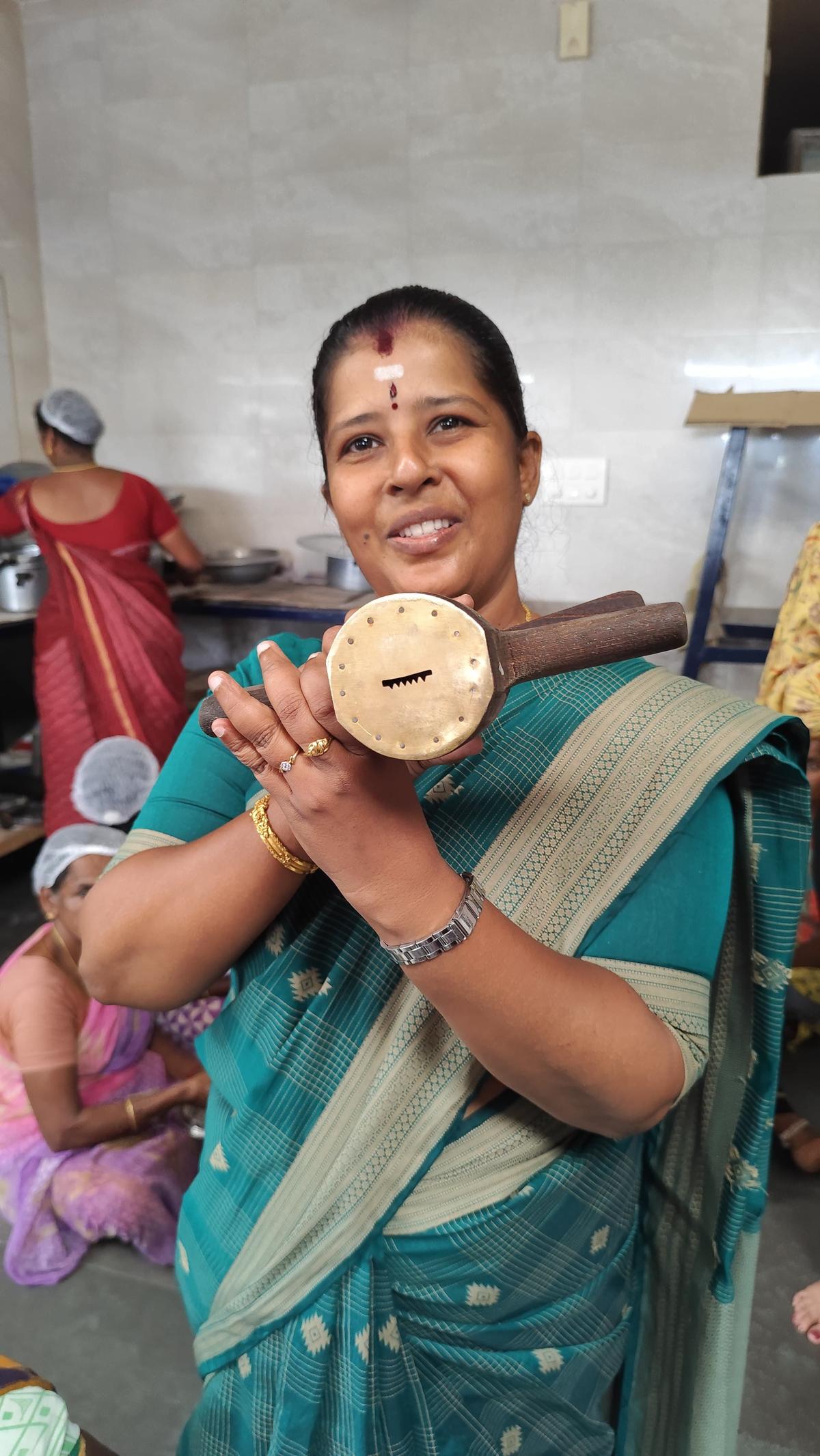
Ms Sivagami from Soundaram snacks showing us a muruku mould
| Photo Credit:
Anagha Maareesha
To get our appetites ready for the evening, we take an afternoon walk in the antique market of Karaikudi. Here you can find cast iron vessels, enamelware crockery and kitchen tools, that was all collected as dowry for the women in the community.
Before dinner we stop at Chettinadu Mansion for high tea. The hotel has snacks such as black rice upma, sweet and savoury kozhukattai, paniyaram, and even a spicy and garlicy rose petal chutney.
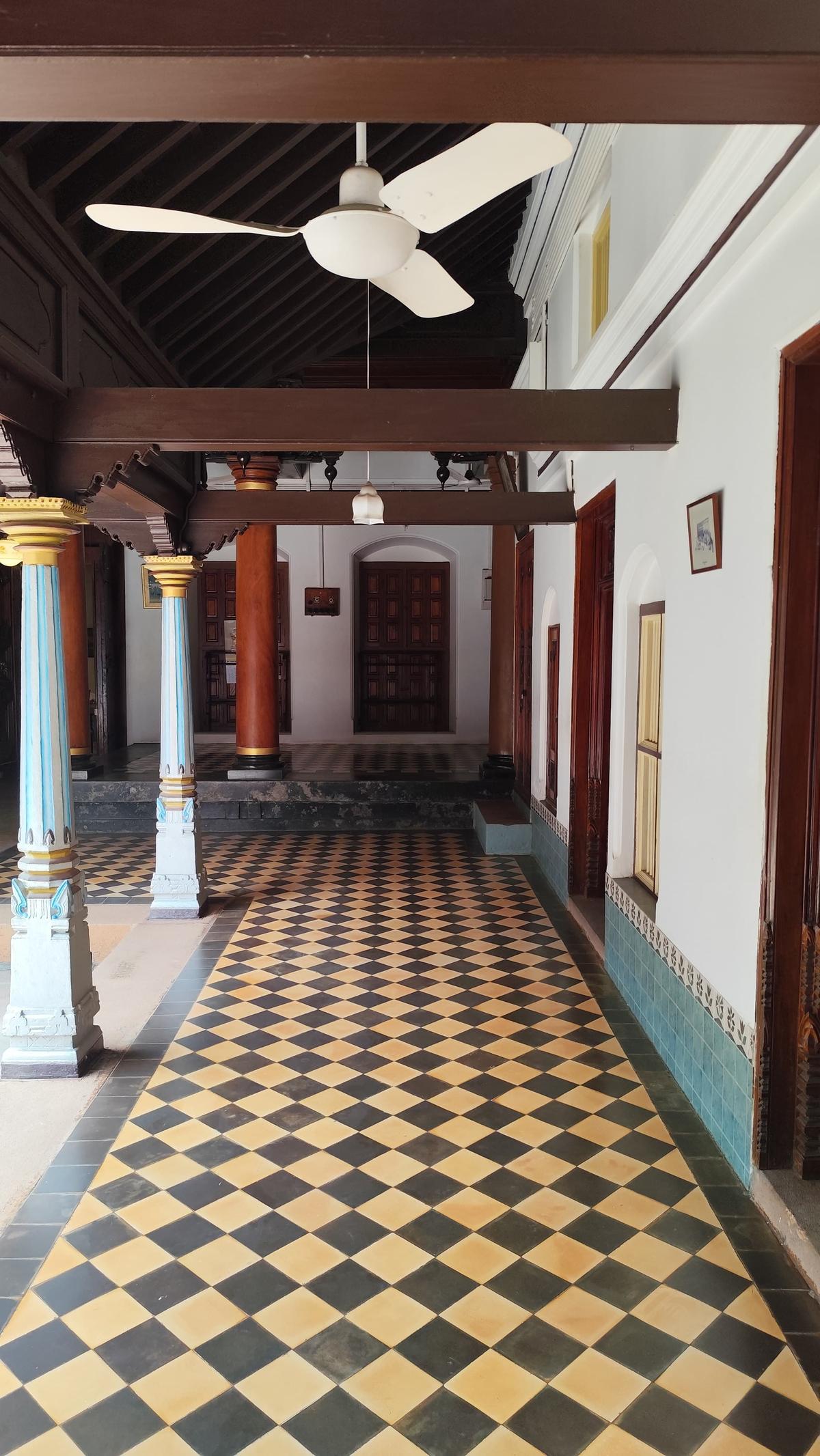
A typical Chettinad style house
| Photo Credit:
Anagha Maareesha
Tales from the kitchen
The evening begins with an illuminating session between historian V Sriram and author Meyyammai Murugappan. Meyyammai wrote The Chettinad Cookbook, with her sister Visalakshi Ramaswamy. In the conversation she shares anecdotes about growing up near her grandmother’s house, which was just across the lane, and how her grandmother cooked for her. After she got married, Meyyammai went to Malaysia and slowly learnt to cook there. Through the talk I learn how frugal, yet hospitable the community is. While the men travelled, the women ran the house. Saving and storing food is a large part of their culture; it would be trumpeted today as sustainability.
We round off the day with a tiffin style dinner at Chidambara Vilas, an 118-year-old home that is now a luxury hotel. I go to bed thinking to myself there is no such thing as too much kozhukattai.
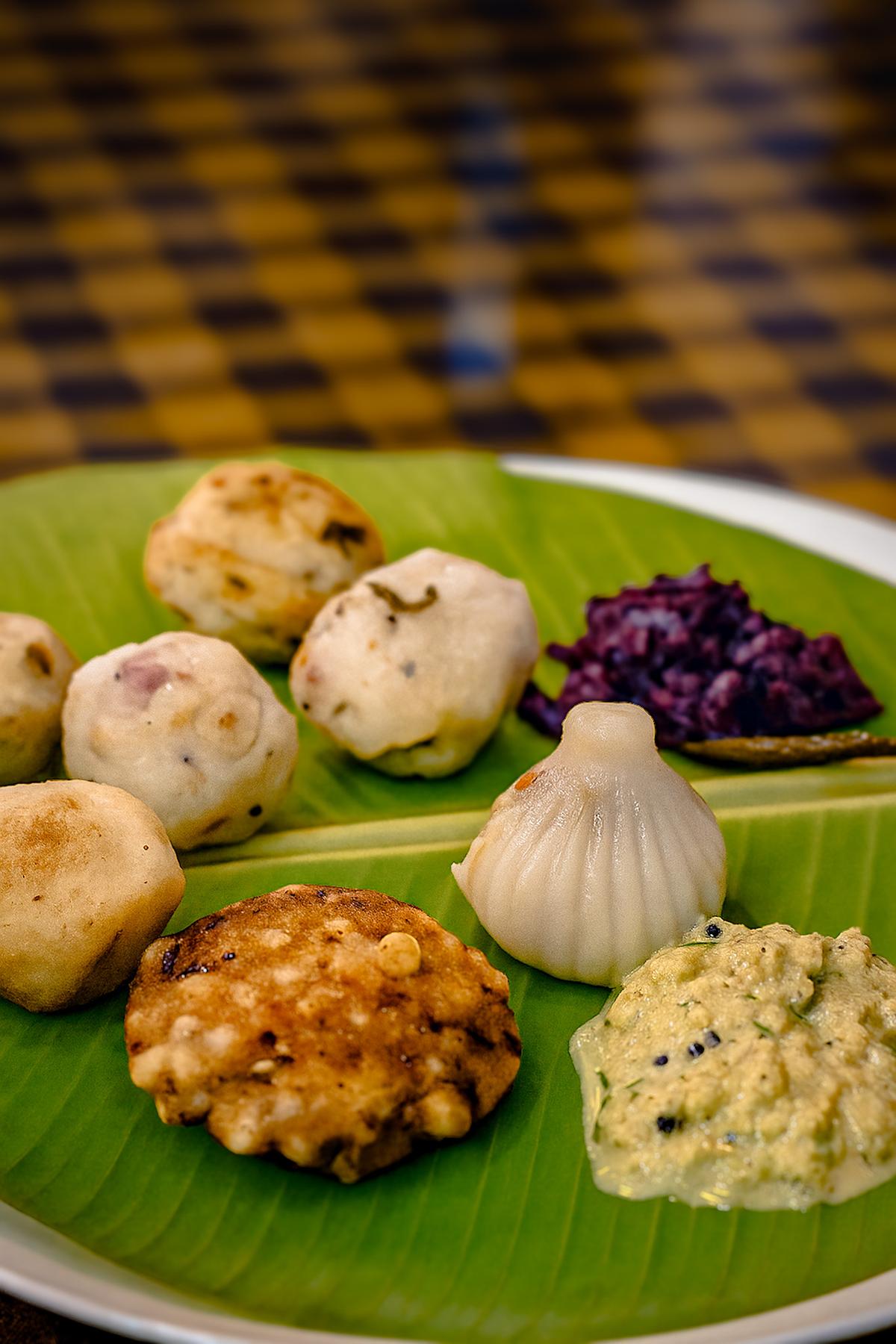
A selection of Chettinad snacks
| Photo Credit:
Special arrangement
From Burma with love
The farewell lunch takes place the next day at Visalam. The house was built a century ago by KVAL Ramanathan Chettiar for his eldest daughter, Visalakshi. This lunch is inspired by Burmese flavours, reflecting the Chettiars’ frequent travels to the region. We have a mildly spiced khao sway, bein mont (a sweet Burmese pancake) and peru soru, also called King’s one pot mutton meal.
Chettinad is its own pocket of culture, history and heritage in the middle of an arid landscape. Its stories, architecture, cuisine food, and enterprising people make it unique and a must-visit for lovers of history and food.
The writer was in Chettinad at the invitation of The Lotus Palace Chettinad
Places to eat in Chettinad
The Bangala – A heritage hotel showcasing festive local cuisine.
The Lotus Palace Chettinad – The hotel has a restaurant 86 Pillars, a poolside bar Aqua, and a chic lounge Red Room.
Chettinadu Mansion – Perfect place for high tea featuring local snacks like kozhukattai and black rice upma.
Chidambara Vilas – A stately home with a fine dine restaurant and a lunch hall serving Chettinad cuisine.
Visalam – The hotel has a garden cafe, a poolside restaurant and terrace grill.
Sri Priya Mess – A no fuss mess serving non vegetarian fare. For lunch only.
Tea stalls – Stop by on the many tea stalls by the streets for hot bhajjis and tea.
Published – August 08, 2025 07:21 pm IST







